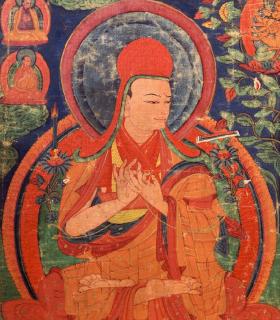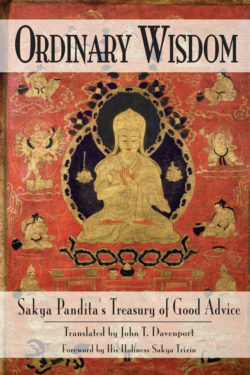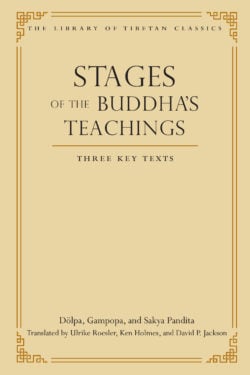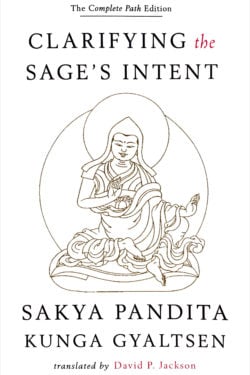Sakya Pandita

Sakya Pandita Kunga Gyaltsen (1182–1251) was a renowned scholar and Tibetan statesman who staved off a Mongolian invasion by converting Emperor Godan Khan to Buddhism. A luminary of the Sakya school of Tibetan Buddhism, his peerless erudition stands out even among a tradition known for its scholastic adepts, and many of his works have been bedrock texts for study and practice since the thirteenth century.
Books, Courses & Podcasts
Ordinary Wisdom
A popular guide to the art of living, the Sakya Legshe—or “Treasury of Good Advice”—has been fundamental to the development of Tibetan culture and character. As in Aesop’s Fables, Sakya Pandita uses proverbs and stories to address the basic question: “How are we to live peaceably with ourselves and with others?”
This is the only available English translation of the Sakya Legshe—a book that reveals the heart of the Buddhist way of life.
Read Sakya Pandita’s biography at the Treasury of Lives.
Stages of the Buddha’s Teachings
Runner-up for 2017 Shantarakshita Award for Excellence in Translation from the Tsadra Foundation
The “stages of the teachings” or tenrim genre of Tibetan spiritual writing expounds the Mahayana Buddhist teachings as a systematic progression, from the practices required at the start of the bodhisattva’s career to the final perfect awakening of buddhahood. The texts in the present volume each exerted seminal influence in the Tibetan Buddhist tradition. The first text, The Blue Compendium, presents the instructions of the Kadam teacher Potowa (1027/31–1105) as recorded by his student Dölpa (1059–1131). This verse work is followed by Gampopa’s (1079–1153) revered Ornament of Precious Liberation, which remains the most authoritative text on the path to enlightenment within the Kagyü school with its extensive quotations from the Indian scriptures. The final selection is Clarifying the Sage’s Intent, a masterwork by the preeminent sage of the Sakya tradition, Sakya Paṇḍita (1182–1251).
Learn more about the Library of Tibetan Classics
Learn about becoming a benefactor of the Library of Tibetan Classics
Clarifying the Sage’s Intent
Among all the writings of Sakya Paṇḍita Kunga Gyaltsen (1182–1251), Clarifying the Sage’s Intent formulates most comprehensively the practices of the bodhisattva path.
A work crucial for understanding the development of Buddhist thought, its perennial importance within the Sakya school of Tibetan Buddhism is underlined by the fact that it is the required text for the first teaching of each new Sakya throneholder after his enthronement. Sakya Paṇḍita (or Sapaṇ for short) used his Clarifying the Sage’s Intent, as its title indicates, to elucidate key points the Great Sage—that is, the Buddha—had in mind when teaching his Dharma. In particular, Sapaṇ recounts the transmissions of the greatest masters of both the Madhyamaka and the Yogācāra strands of the Indian Mahayana. On some points, he addresses what he took to be misinterpretations prevalent in Tibet, and his critical remarks were responded to in the works of later generations of masters in other schools.
Framing his exposition around two key verses from Maitreya’s Ornament of Mahayana Sutras, Sapaṇ divides his work up into seven parts, beginning with the spiritual potential that each being possesses and culminating in the development of complete enlightenment. The lion’s share of the book is devoted to explaining the practice of a bodhisattva’s six perfections. Throughout, Sapaṇ displays the enormous erudition and the incisive clarity that made him renowned as one of the greatest Buddhist luminaries in the history of Tibet.
You may also be interested in The Bodhisattva Path from Ground to Fruition: Commentary on Sakya Paṇḍita’s Clarifying the Sage’s Intent by His Holiness the 42nd Sakya Trizin Ratna Vajra, coming in December, 2022.



